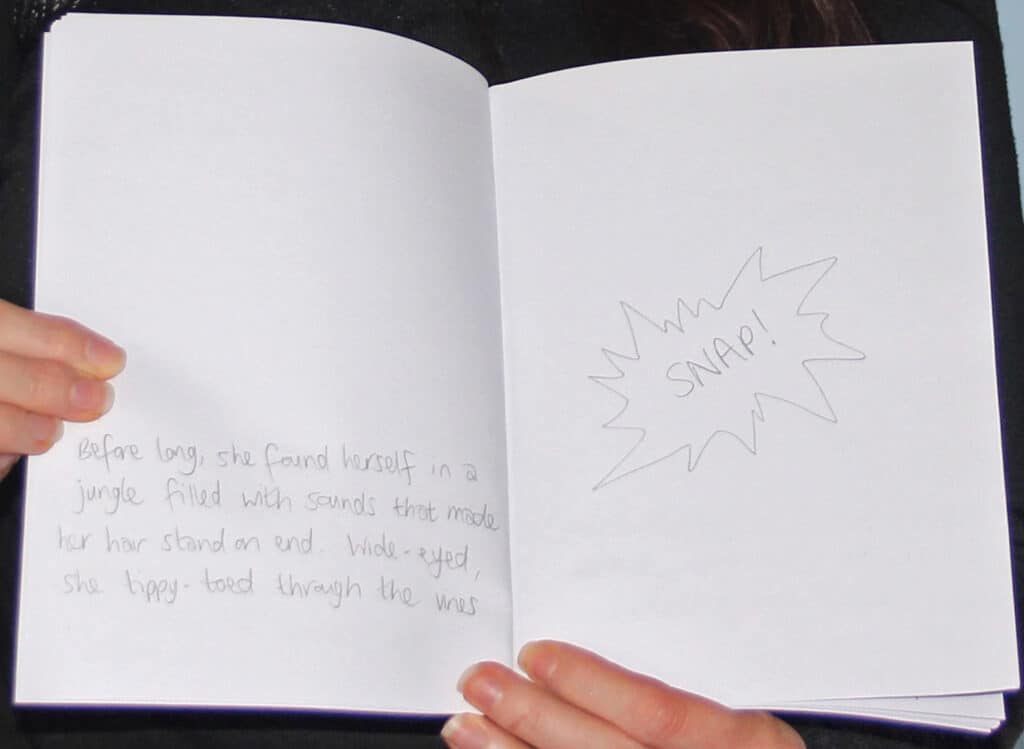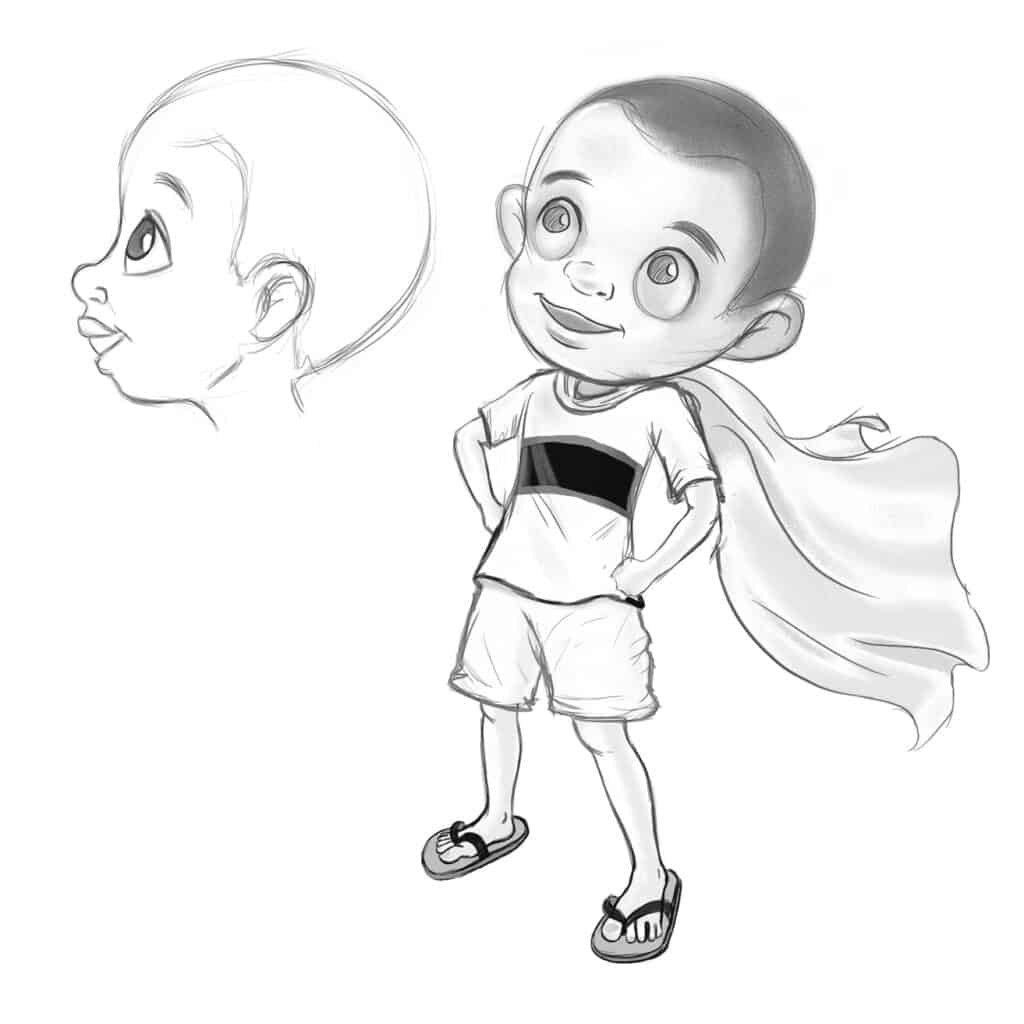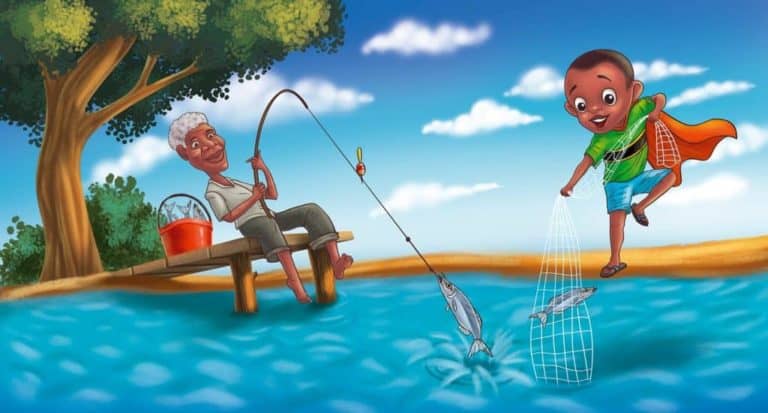Writing a children’s book is incredibly exciting, but once the book is finished, there is so much more to learn. I often hear from people asking, “I wrote a children’s book now what?” If this is you, and are wondering what to do next, then you’ve come to the right place. In this blog post, we’ll explore the different steps to get your children’s book published and out into the world.
Once your book is written, here are some steps to keep in mind:
• Dive deep into the industry and know your market
• Get your book read a LOT to get book feedback
• Get your book professionally edited
• Mockups
• Find an illustrator
• Choose your title well
• Traditional publishing versus self-publishing
• Printing or e-book download
• Getting ready for launch day
• Book reviews
If you still need to write your book, I recommend this article: I Want To Write A Children’s Book. Where Do I Start? This article covers children’s book age groups, ideas for writing a children’s book, how to develop your main character, how long a children’s book should be, what not to do when writing a children’s book, a How To Write A Children’s Book Template, plus tips on how to find the right illustrator.
Bringing a children’s book to market can be a lengthy and sometimes difficult journey. However, having patience and being persistent in your efforts will help ensure success. With the right knowledge, strategies, and support, you can bring your story to life and share it with the world.
Dive deep into the industry and know your market
Before you hire an illustrator (if you’re self-publishing) or before you start submitting your manuscript to publishers (if you want to be published traditionally), it is important to do some research into the children’s book market. Understand children’s book age groups, categories, word count and page count. There are many reputable resources online and offline to learn, like Children’s Book Mastery and Write For Kids.
Whether you’re writing fiction or nonfiction, read books similar to the one you have written and see that there isn’t a book almost exactly like yours out there. If so, see if you can tweak something about your book to make it different. Also see which kinds of illustrations the similar books have, the types and ages of characters in the books, and what people love and don’t love about them in the reviews. Amazon is one of the best resources for this. Reading reviews from readers and critics can also give you an idea of what is currently popular in the market and help you to improve your writing.
If you want to traditionally publish, you can also research children’s book publishers and find out what they are looking for in a manuscript.
You can also attend book festivals and conventions to learn more about the industry. These are also great places to meet publishers and other children’s book authors.
Finally, there are a number of online communities and forums specifically for children’s book authors and joining these can be a great way to get advice, share ideas and learn more about the industry.
Get book feedback
Join a children’s book critique group and get feedback on your book, or more accurately, manuscript feedback. It’s crucial to find out what others think of your book because they’ll see things you don’t see. We tend to get so close to our work that sometimes we don’t see things that don’t make sense or parts to improve. Feedback will help you ensure your book is up to the highest standards.
Get feedback from adults and kids in your age group. Ideally, the adults will be parents of children within your books’ age group, or authors who know writing craft and children’s literature industry standards for your type of children’s book. You can get together a small group of kids and read your manuscript aloud to them and ask them questions to see if they understood, what they liked most, what they didn’t like, what they might change, and so on.
Online, you can join a community like Children’s Book Mastery Community: Collaboration & Support for Authors or SCBWI.
Get your book professionally edited
Once you’ve completed the writing and revising, the next step is to get it professionally edited. It is crucial to work with a professional children’s book editor to help ensure that the quality of your work is of the highest standard.
A professional editor can help to eliminate any errors in your writing, improving the structure and flow of the book to make it more enjoyable to read. They can provide valuable feedback and suggestions on how to improve your book, ensuring it meets all the necessary standards for publication, including the right word count. Editing will help you get your book ready for publication and to be of the highest quality. Even if you’ll be submitting to a traditional publisher who will get you a professional editor, you can increase the chances of your submission being accepted by working with an editor before submitting to publishers. Remember, publishers see many submissions every day, and the better your manuscript is, the better your changes are.
There is a handy checklist under #11 of this article to help you find the right editor.
Having your book professionally edited is an essential step in the publishing process. It is an investment that will help to ensure your book is of the highest possible quality and is ready for publication. Professional editors can help to eliminate any errors in your writing and provide feedback and suggestions to improve your book, making it a rewarding experience for both you and your readers.
Mood boards, Mockups and Book Dummies
It can be helpful to create a mood board, mockup, or book dummy, for your book. A mood board is simply finding images, and even words) that have the look or feel you’d like for your book. You can share this with an illustrator to help them understand your vision.
A mockup or book dummy is a valuable tool for getting an idea of how your book will look and flow. You can even see how the book might look and feel in different sizes and formats. You can create a digital mockup, showing all the pages as squares or rectangles and seeing where your text and illustrations would go. Or you can create a physical mockup or book dummy as follows:


You can also employ a professional designer to help you create a mockup. This can help you plan the best book possible.
Find an Illustrator
Finding the perfect illustrator to bring your children’s story to life can be a daunting task. You need to make sure the illustrator’s style matches your vision and that you can afford their services. Of course, you can have a look around this site. We’d love to work with you on your book illustrations project.
To ensure you find the perfect fit, here are some tips:
- Start by researching different illustrators and their artistic styles. Find illustrators who have the style you envision for your book.
- Make sure you find someone who is experienced in children’s book illustration, since there are skills involved in children’s book illustrations that not all artists can do.
- Check if they fit within your budget.
- Have a chat with them, asking questions, telling them your ideas, and seeing how they communicate. This can be via email, on a call, or even in person. Make sure they understand you, answer your questions, and reply timeously.
- See if they have a contract, and what it says. Else, provide them with a contract. There are templates online. I recommend hiring them as “work-for-hire,” so you own the illustrations once you’ve paid for them.
- If it’s a freelance illustrator, ensure you pay through a portal that offers buyer protection.
- Optional: Once you’ve narrowed down the list, get 2-3 illustrators to draw you a paid sample. Give them a scene from your book and see what they come up with. Ask them for a revision (even if you love what they’ve done), to see how they handle your request.
- Choose your illustrator.
- Communicate your ideas and expectations clearly to the illustrator. This will ensure they have a clear understanding of what you’re looking for and can create illustrations that match your vision.
During the illustration process, it’s important to provide feedback to the illustrator. This will ensure the illustrations stay on track and match your vision. At the same time, try to give them as much creative freedom as you can.
You may have the question: Do I need illustrations before sending my book to editors, publishers, and agents? It might be a good idea to have just the main character sketched out and doesn’t even have to be full colour.

Character sketch by GetYourBookIllustrations for Little Dude and his Shagalabagala Day by Coni Knepper.
Finding the right illustrator to bring your story to life doesn’t have to be difficult. You can also book a consultation call with us (free and obligation free) to find out more how it works. With the right research and communication, you can find an illustrator who is experienced in children’s book illustration and whose style matches your vision.
Choose your title well




Some examples of fun and simple book titles. All illustrated and designed by GetYourBookIllustrations.
Another part of writing a children’s book is finding a title that resonates with the age group you’ve written for. It’s often best to make the title short and catchy, and ensure you choose something that will pique the interest of young readers, and convey the message or tone of your book. Don’t be afraid to change your title multiple times until you hit the exact right on! Narrow it down to 2-4 titles and ask your critique group, or parents and kids, which title they prefer. Go with the majority vote!
Here’s a deep dive into titles by Kindlepreneur.
Finding the perfect title for your book can be a difficult task, but it can also be fun. Look at other books if needed to help you come up with ideas.
Traditional Publishing vs Self Publishing
A lot of aspiring authors with the question, “I wrote a children’s book. Now what?” get stuck at publishing. I find many authors still don’t realise they can self-publish and don’t need to find a publisher. With publishing, you have two main options: traditional publishing or self-publishing. There are also hybrid publishers, where you carry some of the cost, but they still operate mostly like traditional publishers and only accept a percentage of submissions.
Traditional publishing involves submitting your manuscript to a publisher. If accepted, they will provide services such as editing, illustrations and book design. They will also help with steps like choosing book categories and other publishing and marketing and book distribution steps. However, this process can be lengthy and difficult with no guarantee of success, since children’s book publishers get many submissions and can only publish a small percentage of these.
You can work with an agent to find a publisher, though being accepted by an agent can be as tough as being accepted by a publisher. You can also look for publishers that accept unagented submissions. Unagented submissions are when you can submit directly to the publisher without going through an agent. Whichever route you choose, research the publishers or agents you want to submit to, so that you approach the right ones. Their website will usually say which submissions they’re looking for, e.g. fiction or nonfiction, picture books or Middle Grade books, humorous or inspiring books, and so on.
Alternatively, self-publishing is a great way to get your book out there quickly. You have full control over the content, design and format of your book, and you receive all of the profits from the sales. However, you are also responsible for all of the production costs, editing, marketing and distribution.
Whichever option you choose, it’s important to do your research and make sure you’re making the best decision for yourself and your book.
Printing or Ebook Download
When you publish, you should decide if you’ll publish a print book, ebook, or both. If you’re printing, you can have a hardcover and/or paperback version of the book. For children’s books, especially picture books, you should definitely print your book. Printed books are preferred in children’s books for younger kids, and they’re also great because they can be sold in stores and online, often at higher profit margins than ebooks. Printed books also provide readers with a physical product that they can enjoy. You can also have an ebook as a cheaper alternative for book buyers, or to use in giveaways.
You can use print-on-demand (POD) platforms like KDP and IngramSpark. These platforms print one book each time someone orders one, thus the name, “print on demand”. This means there are no upfront costs or risks for you. That said, the costs are higher, thus the profits are lower, and the print quality isn’t the best. You can learn more about POD options in this article: How to Publish a Picture Book.
For high-quality printed books at a much lower cost, you can do bulk printing. Bulk printers use a different method for printing, called offset printing, which gives a more professional finish. To bulk print, you need to pay quite a bit for printing and shipping upfront and work out storage for the books, but if you have a good marketing strategy,m you can make much better profits. IAPC is a good option to help with printing, shipping and storage.
This How to Publish a Children’s Book Yourself article gives more information on POD vs bulk printing
Another option is to sell ebook downloads. Ebooks are popular because they can be sold online at a lower price than printed books. Ebooks are also convenient for readers, as they can be purchased and downloaded instantly. Additionally, ebooks can be read on many different types of electronic devices.
Getting ready for launch day
As early as possible, you need to start thinking about how to get your book out into the world. You need to let as many people as possible know about your book and create excitement about its upcoming release. This way, you can launch successfully, instead of hitting publish and then having no sales. Starting early and having a successful launch will help your book marketing be more successful right from the start and in the long run.
A great way to get the word out about your book is to create a website and start gathering the email addresses of anyone interested. You can provide information about your book, share reviews, and talk about upcoming events. Get those who are excited to support you to be part of your launch team. You launch team can help you by spreading the word and leaving a review once you publish.
You can also reach out to local bookstores and libraries to share your book and to have live book readings, book signing days, and book launches to celebrate the release of your book. Additionally, you can create a social media presence to promote your book. Use different platforms to share updates, reviews, and exciting news about your book. You should also look for opportunities to get your book reviewed by other authors and bloggers.
Also create an Amazon profile and sell on Amazon. Decide if you’ll run Amazon Ads. You can also create a profile on other digital platforms, like Bookbub and StoryOrigin.
Lastly, don’t forget to reach out to family, friends, and colleagues to help spread the word about your book. With a well-thought-out plan and a lot of hard work, you can ensure your book launch is a success.
Book reviews
Once your book is published, you can use online platforms like Amazon and Goodreads to spread the word about your book. Getting reviews from readers on these sites is important, as it will help you sell more books and show potential buyers that your book is worth reading.
Encourage everyone on your launch team to review your book, put a review request in your book asking readers to please leave a review, and ask any book buyers that you can contact to please leave a review. Give them a link to the book, so they can just click and go leave a review.
Closing
Writing a children’s book is an amazing accomplishment, but it is only the first step in a much longer process. Once you have completed your book, it is time to take all the steps to launch it into the world. It is essential to do your homework and lay out a plan of action. Before your book is even published, it is important to create a marketing plan to promote it. Reach out to bookstores, libraries, and schools to arrange readings and book signings. You should also develop a presence online to build an audience for your book. Networking with other authors in the children’s book space is also a great way to increase your reach.
Writing a children’s book is just the beginning. The steps you take next will make a big difference in how successful the book will be. A big part of this is getting high-quality illustrations. Feel free to book a free Author Consultation Call on this page and chat to us about your illustrations!
I hope this article has answered the question, “I wrote a children’s book. Now what?”
I’d love to hear from you in the comments!
- Which kind of book have you written?
- Which next step are you most nervous about and why?
FREE Webinar: How To Write A Picture Book Without Self-Doubt Or Procrastination, Even If You’ve Always Struggled To Turn Your Idea Into A Story.








